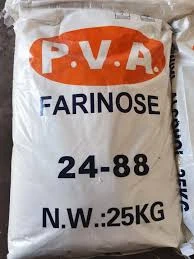Understanding HPMC Grade A Comprehensive Guide
Hydroxypropyl Methylcellulose (HPMC) is a versatile and widely used compound in various industries, including pharmaceuticals, food, cosmetics, and construction. Its unique properties make it an essential ingredient in many formulations, and understanding its grades, specifically HPMC grade, is crucial for selecting the right type for specific applications.
What is HPMC?
HPMC is a semi-synthetic polymer derived from cellulose, the most abundant organic polymer on Earth. The modification of cellulose through etherification introduces hydroxypropyl and methyl groups, which significantly alter its solubility, viscosity, and thermal stability. This modification allows HPMC to be water-soluble, making it an effective thickening, binding, and stabilizing agent.
Different HPMC Grades
HPMC is categorized into various grades based on the ratio of hydroxypropyl and methyl content, as well as the viscosity of the aqueous solution. The main grades include
1. Low-viscosity HPMC These grades are used in applications requiring lower thickening and binding properties. They are often employed in the preparation of coatings, food products, and pharmaceuticals where a lighter consistency is necessary.
2. Medium-viscosity HPMC This grade provides a balanced viscosity profile, making it suitable for a wide range of applications, from drug formulations to personal care products. It offers good binding and film-forming properties.
3. High-viscosity HPMC These are the most viscous grades and are ideal for products where a thick, gel-like consistency is required. They are often used in construction materials, such as mortars and tile adhesives, as well as in the formulation of rheology modifiers in paints and coatings.
hpmc grade

Applications of HPMC Grade
1. Pharmaceuticals HPMC is extensively used in the pharmaceutical industry for the formulation of tablet binders, film coatings, and controlled-release drug delivery systems. Its ability to form stable gels at various concentrations allows for precise control over the release profiles of active ingredients.
2. Food Industry In food products, HPMC serves as a thickener and emulsifier. It is used in sauces, dressings, and dairy products to improve texture and stability. Additionally, it is a popular alternative to gelatin, making it suitable for vegetarian and vegan formulations.
3. Cosmetics and Personal Care The cosmetic industry utilizes HPMC for its excellent film-forming and thickening properties. It is found in lotions, creams, and shampoos, where it enhances product consistency and provides a smoother application experience.
4. Construction Materials In construction, HPMC is a key ingredient in dry-mix formulations, including plaster and tile adhesives. Its water retention properties help improve adhesion and workability, making it essential for high-performance building materials.
Selecting the Right HPMC Grade
Choosing the appropriate HPMC grade involves considering several factors, such as the desired viscosity, solubility, and the specific application requirements. For example, if the application requires a quick-drying formula, a lower-viscosity HPMC might be preferred. Conversely, for applications needing extended release or thicker consistency, higher-viscosity grades would be more suitable.
Conclusion
In conclusion, HPMC grades offer a range of functionalities suited to various applications across multiple industries. Whether in pharmaceuticals, food, cosmetics, or construction, HPMC's adaptability has made it a valuable ingredient. Understanding the different grades and their specific properties is essential for formulators and manufacturers to optimize their products and meet the demands of consumers effectively. As industries continue to evolve, the role of HPMC will surely expand, paving the way for innovative applications and formulations.
-
Rdp Powder: Key Considerations for Wholesalers in the Building Materials IndustryNewsJul.08,2025
-
Key Considerations for Wholesalers: Navigating the World of Hpmc - Based ProductsNewsJul.08,2025
-
Hpmc Detergent: Key Considerations for WholesalersNewsJul.08,2025
-
Key Considerations for Wholesalers: China Hpmc For Tile Adhesive, Coating Additives, Concrete Additives, and MoreNewsJul.08,2025
-
Crucial Considerations for Wholesalers: Navigating the World of Construction MaterialsNewsJul.08,2025
-
Key Considerations for Wholesalers Sourcing Additive For Cement, Additive For Concrete, Additive For Putty from Additive Manufacturer Shijiazhuang Gaocheng District Yongfeng Cellulose Co., Ltd.NewsJul.08,2025




